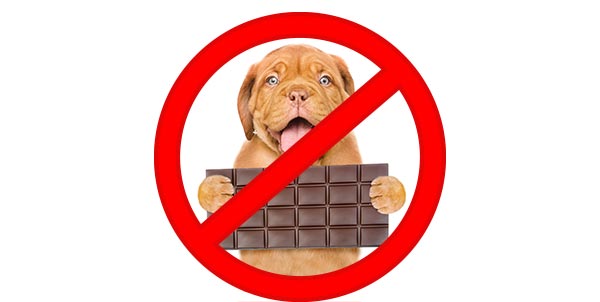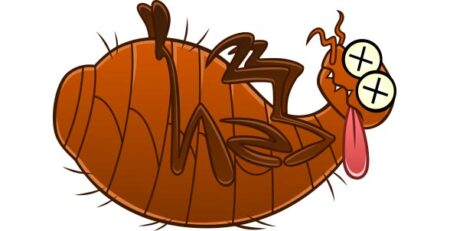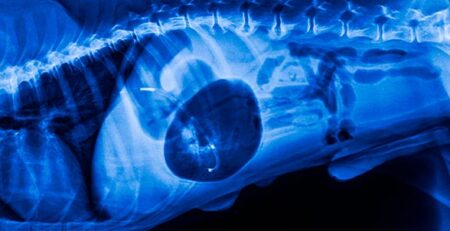Table of Contents
Chocolate and other substances that are harmless to us humans, on the other hand, are deadly to dogs and cats: here are what they are and why you absolutely must prevent them from ingesting them.
If you are in the habit of sharing your meal with your dog or cat and can’t resist those beseeching eyes popping out from under the table, bestowing sweets and chocolate, know that no matter how much they show they like it and a lot too, in most cases you are doing a serious act that can harm your pet’s health more than you imagine.
When you offer chocolate to your pet you are not rewarding him, you are poisoning him!
Knowing your dog’s and cat’s digestive system is essential to enable you not only to understand the correct method of feeding them but also to choose the most suitable foods and avoid toxic ones.
Dogs and cats do not assimilate all substances as we humans do
The function of the digestive system is to transform the complex molecules of food into simpler components that can be absorbed and then used by the body.
Dogs and cats are carnivores, and their digestive systems are different from ours.
A first important difference is the lack of digestive enzymes in saliva dedicated to starch processing.
This is why, for example, the digestion of carbohydrates is much longer and more difficult than that of humans.
Some substances harmless to us humans can be lethal to dogs and cats
Alkaloid substances called methylxanthines are present in chocolate, tea, coffee and cola drinks.
Specifically: in coffee we find caffeine, in tea we find theophylline, and in chocolate we find theobromine.
These excitatory substances, which the dog’s enzymes are unable to break down, accumulate in the animal’s body and can cause severe symptoms up to and including death in some cases.
Theobromine has a diuretic, cardiotonic, and vasodilatory action, especially at the coronary level.
Serious disorders arise in the animal even after the ingestion of small amounts of chocolate.
Theobromine triggers a series of chemical reactions that act on receptors in the brain, altering the regulation of sleep-wake rhythm and causing increased oxygen flow to the brain, as well as increased heart rate.
How long does it take a dog or cat’s body to dispose of theobromine
In humans, theobromine concentration after 7 hours is reduced by 50%. The same amount in the dog takes 17 hours.
Since, therefore, dogs and cats dispose of theobromine very slowly compared to us humans, the effects of this substance are much longer lasting.
It can take up to 12 hours for symptoms of theobromine intoxication to occur.
These include: raised body temperature, gastrointestinal disturbances, rapid breathing, and tachycardia.
The tolerable amount of theobromine for dogs is about three times less than for humans.
To get an idea, 300 mg per kg of body weight for a dog and 200 mg/kg for a cat is enough for dark chocolate to have life-threatening effects.
In addition to the direct effect of theobromine, we must also consider that chocolate is often fortified with significant amounts of sugar and fat.
Sugars and fats of course are not good for our four-legged friends at all and increase the risk of gastrointestinal disorders, pancreatitis and diabetes.
Symptoms of chocolate poisoning in the dog and cat
In principle, it is not necessarily the case that a small piece of chocolate will cause great problems for our dog, but this should not be used to justify any exception.
After eating even a small amount, stomach aches may occur, with possible vomiting or diarrhea.
A different matter is the ingestion of massive doses of chocolate and thus, theobromine.
Symptoms typically appear 2-4 hours after ingestion.
If the amounts are high and if the dog is small and timely action is not taken, unfortunately, death of the animal can also occur.
In addition to vomiting, diarrhea, and agitation, the picture tends to worsen through other symptoms: tremor, irregular heartbeat, muscle rigidity, severe arousal, increased temperature, rapid breathing, low blood pressure, stroke, convulsions, and internal bleeding.
What to do if your dog or cat has ingested chocolate
If you notice or suspect that your pet has ingested chocolate, it is a good idea to take him or her immediately to the veterinarian, who should be made aware of what has happened so that he or she can intervene as quickly as possible with the most appropriate treatment.
In any case, treatment should be prompt, possibly within 2 to 4 hours after intake, that is, before theobromine enters the bloodstream.
In most cases, if the intervention is quick, your friend will be safe within a few hours of ‘starting treatment.
Prevention is always the best weapon: remember to keep your pet at a safe distance from the pantry.











